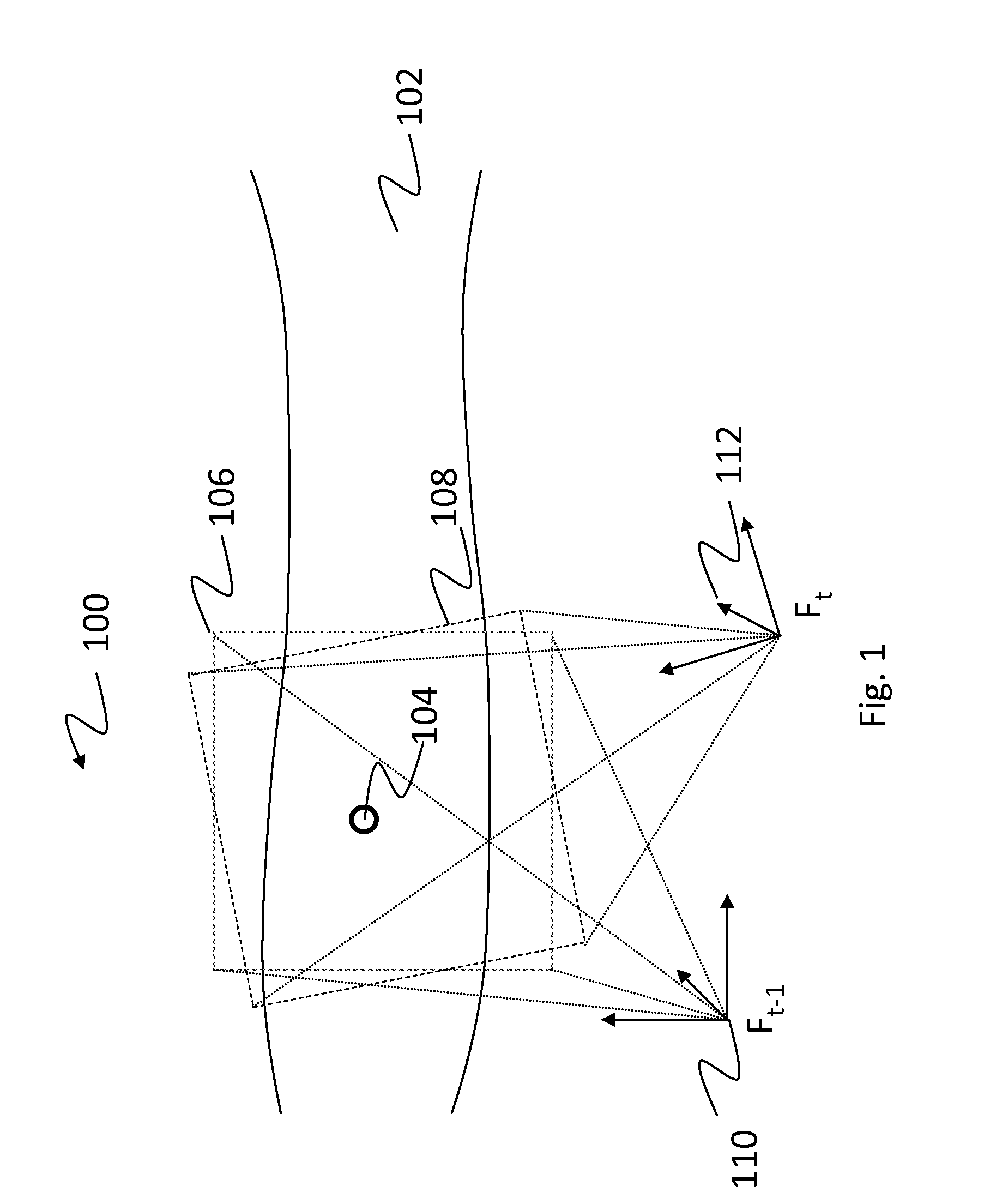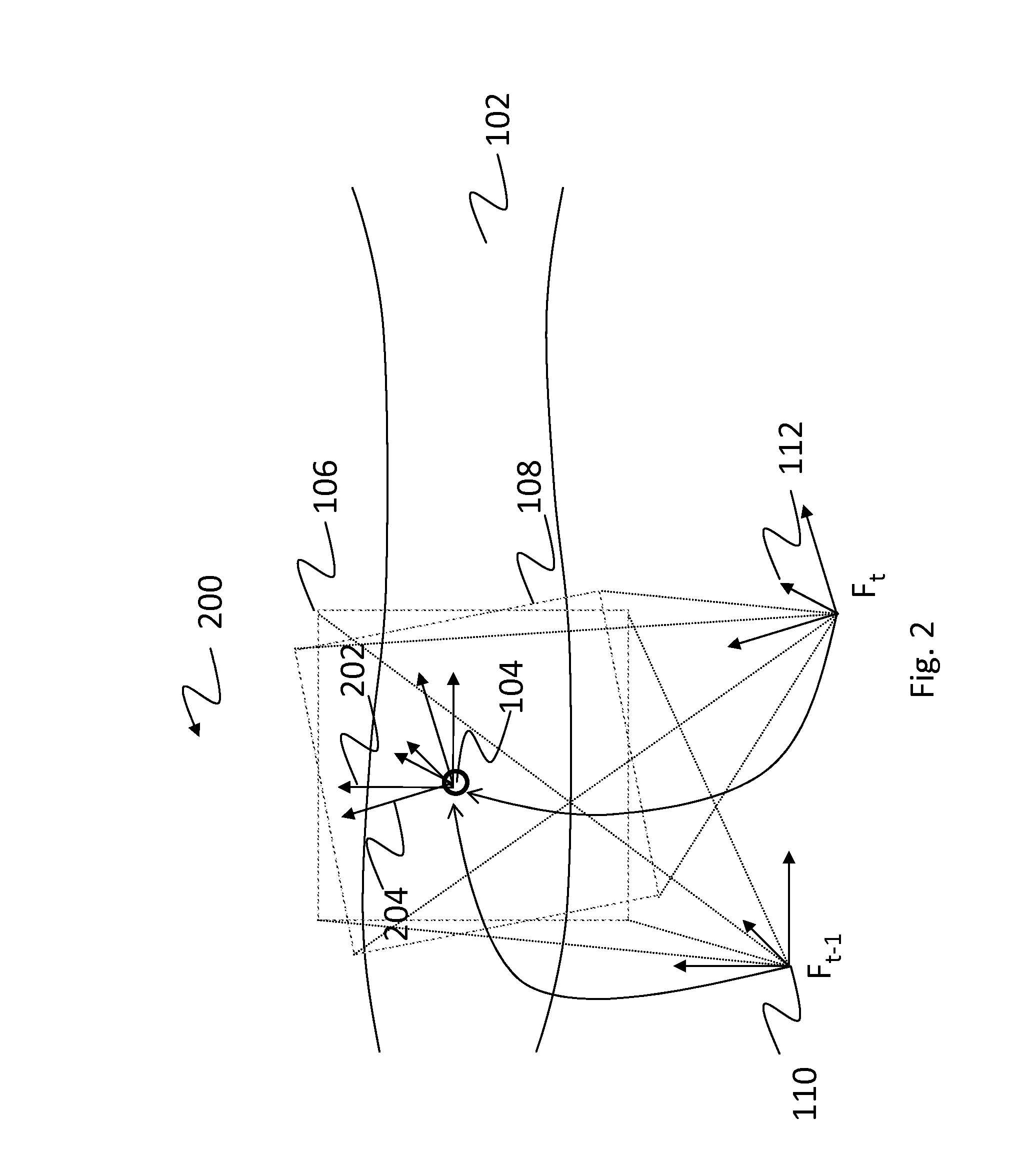Sensor positioning for 3D scanning
a technology of 3d scanning and sensor positioning, applied in the field of 3d scanning, can solve the problems of prone to errors, affecting cost, and inertial system not providing a spatial relationship,
- Summary
- Abstract
- Description
- Claims
- Application Information
AI Technical Summary
Benefits of technology
Problems solved by technology
Method used
Image
Examples
example method steps
[0092]With reference to FIG. 6, an example method 600 for obtaining a refined pose for a 3D sensor for online 3D modeling of a surface geometry of an object will now be described. The method comprises providing the 3D sensor and a geometry model of at least part of the surface 602; observing a portion of the surface of the object with the 3D sensor 604; measuring an initialization pose for the 3D sensor 606 by positioning device pose measurement (see FIG. 7) and / or predicted pose tracking (see FIG. 8) and / or target observation (see FIG. 9); finding a best fit arrangement of the 3D point measurements in the geometry model using the initialization pose 608 and generating the refined pose for the 3D sensor using the best fit arrangement 610.
[0093]In one embodiment, the refined pose includes at least one parameter of the initialization pose.
[0094]In one embodiment, finding a best fit arrangement includes weighting geometry surface points and target points to find the best fit arrangemen...
PUM
 Login to View More
Login to View More Abstract
Description
Claims
Application Information
 Login to View More
Login to View More - R&D
- Intellectual Property
- Life Sciences
- Materials
- Tech Scout
- Unparalleled Data Quality
- Higher Quality Content
- 60% Fewer Hallucinations
Browse by: Latest US Patents, China's latest patents, Technical Efficacy Thesaurus, Application Domain, Technology Topic, Popular Technical Reports.
© 2025 PatSnap. All rights reserved.Legal|Privacy policy|Modern Slavery Act Transparency Statement|Sitemap|About US| Contact US: help@patsnap.com



